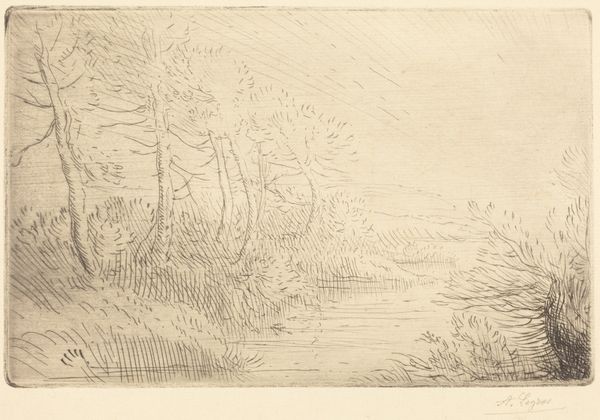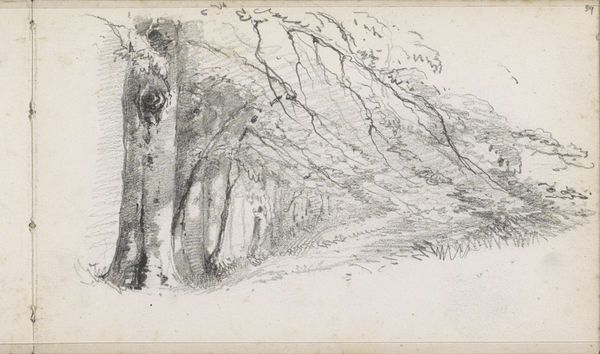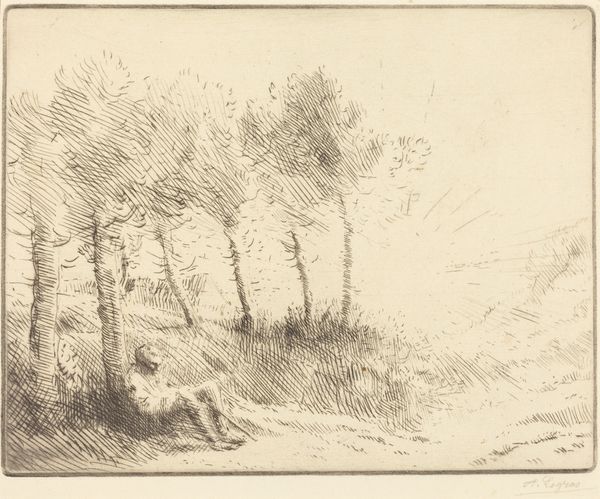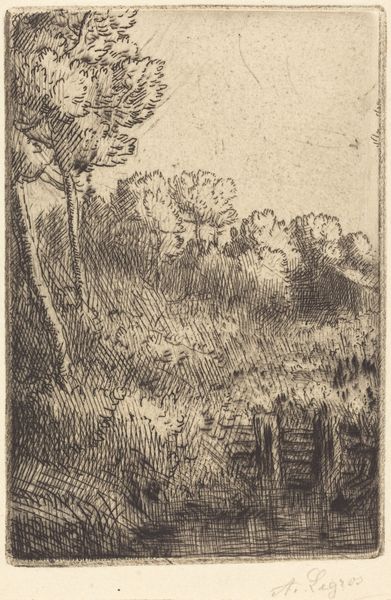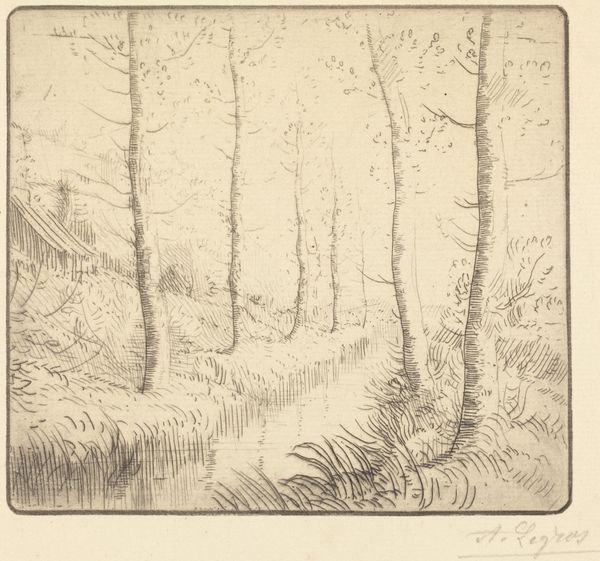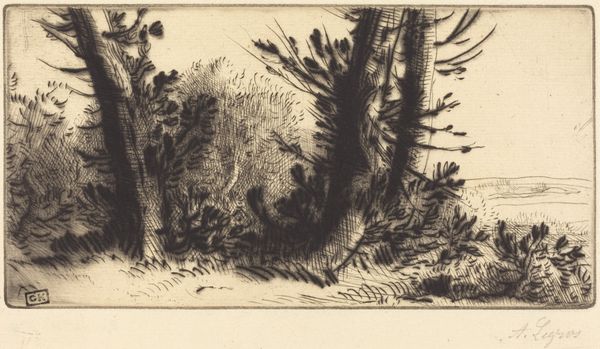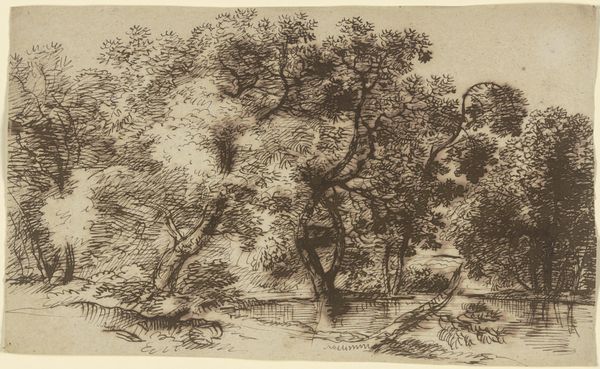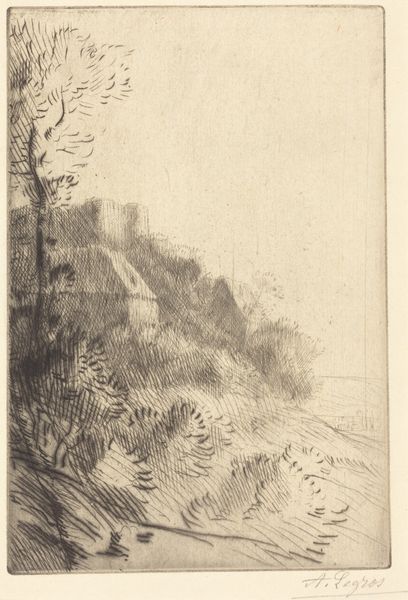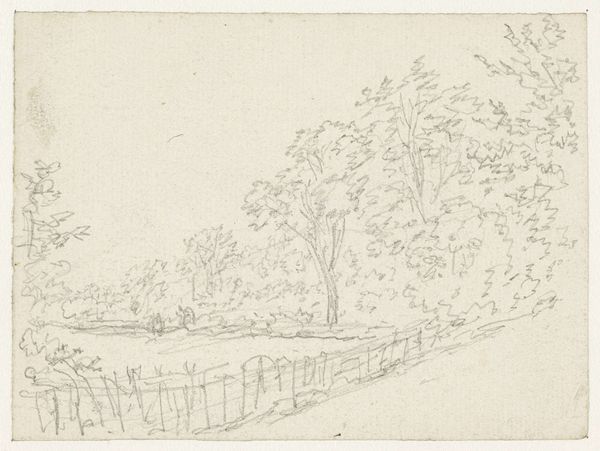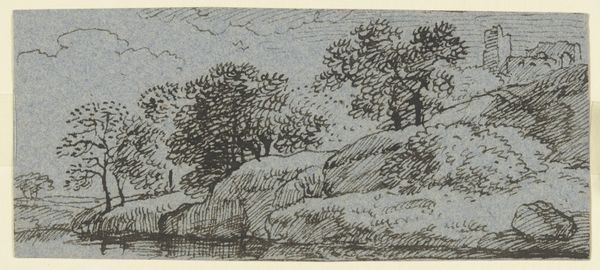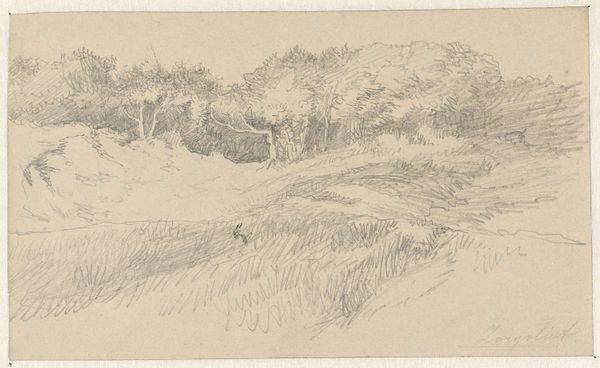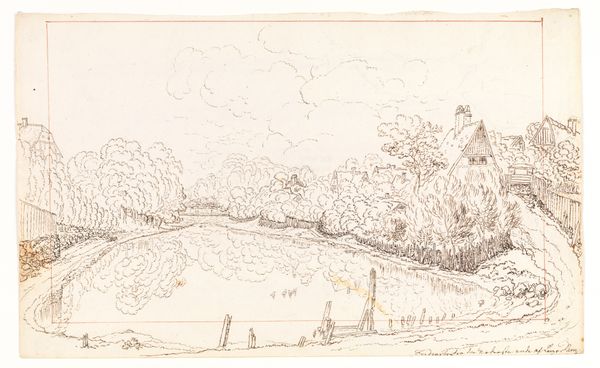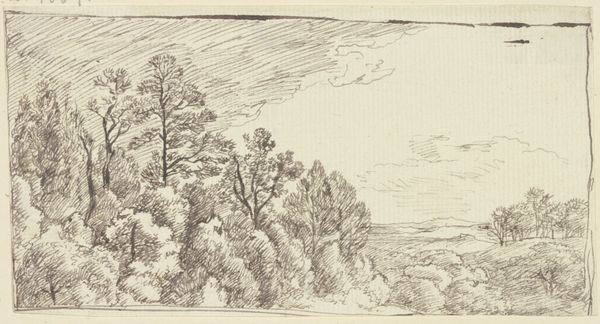
drawing, print, etching, paper, pencil
#
drawing
# print
#
impressionism
#
etching
#
landscape
#
etching
#
paper
#
pencil drawing
#
pencil
Dimensions: Sheet: 12 in. × 17 5/16 in. (30.5 × 44 cm) Plate: 3 7/8 × 12 1/2 in. (9.9 × 31.8 cm)
Copyright: Public Domain
Editor: Here we have Fèlix Bracquemond's "Landscape study, outside Sèvres," an etching from 1873. The detail achieved with etching on paper is astonishing! What can we tell about the historical or material conditions in which this was created? Curator: I see this less as a depiction of a specific landscape and more as an engagement with the material process of printmaking. Bracquemond, a key figure in the etching revival, was very interested in how the medium itself could shape artistic expression. The very act of pressing metal against paper in this era also mirrors the rising industrial mechanization, impacting labor and our engagement with materials. Notice how different areas showcase distinct mark-making, almost like a catalog of techniques, highlighting the means of production. What stands out to you? Editor: It feels like he's less interested in mimetic representation, and more in celebrating the capabilities of etching. How does this challenge our notions of art versus craft? Curator: Precisely. At this time, etching was seen as more of a reproductive or commercial process. Bracquemond elevated it to a fine art, showcasing its unique potential. This challenges traditional art hierarchies. We might consider where Bracquemond acquired his materials, and whether he used commercially produced metal plates or crafted them himself, deepening our view of the commodification and circulation of art-making materials. Do you find connections with today’s makers and processes? Editor: Definitely, there's a parallel with contemporary artists who explore digital fabrication, blur the lines between art, design, and craft. It’s interesting to see these discussions reflected in artistic practices then, as they are now. Thanks! Curator: Indeed. By focusing on the "how" and "what" of art making, we gain a more holistic appreciation.
Comments
No comments
Be the first to comment and join the conversation on the ultimate creative platform.
